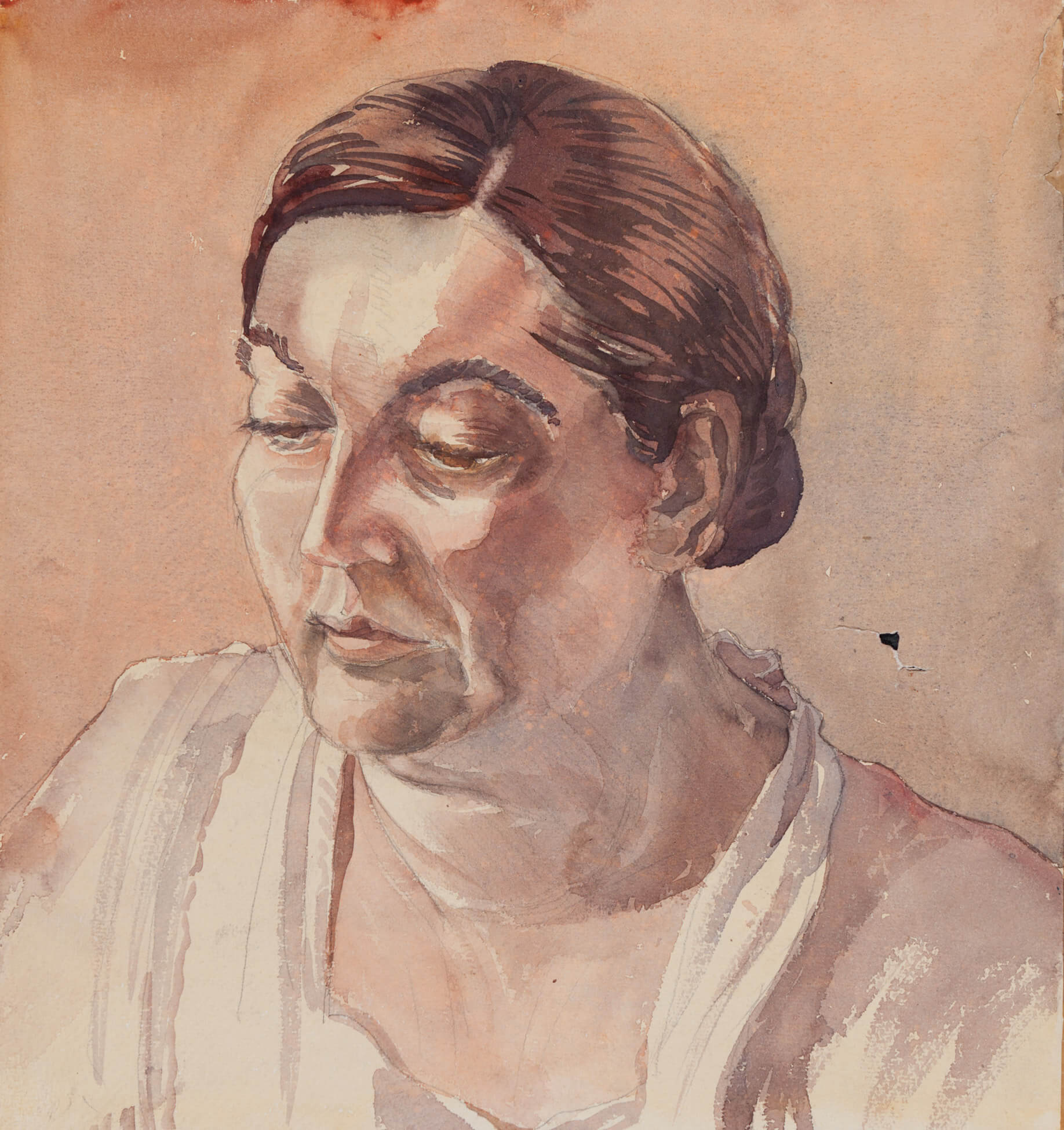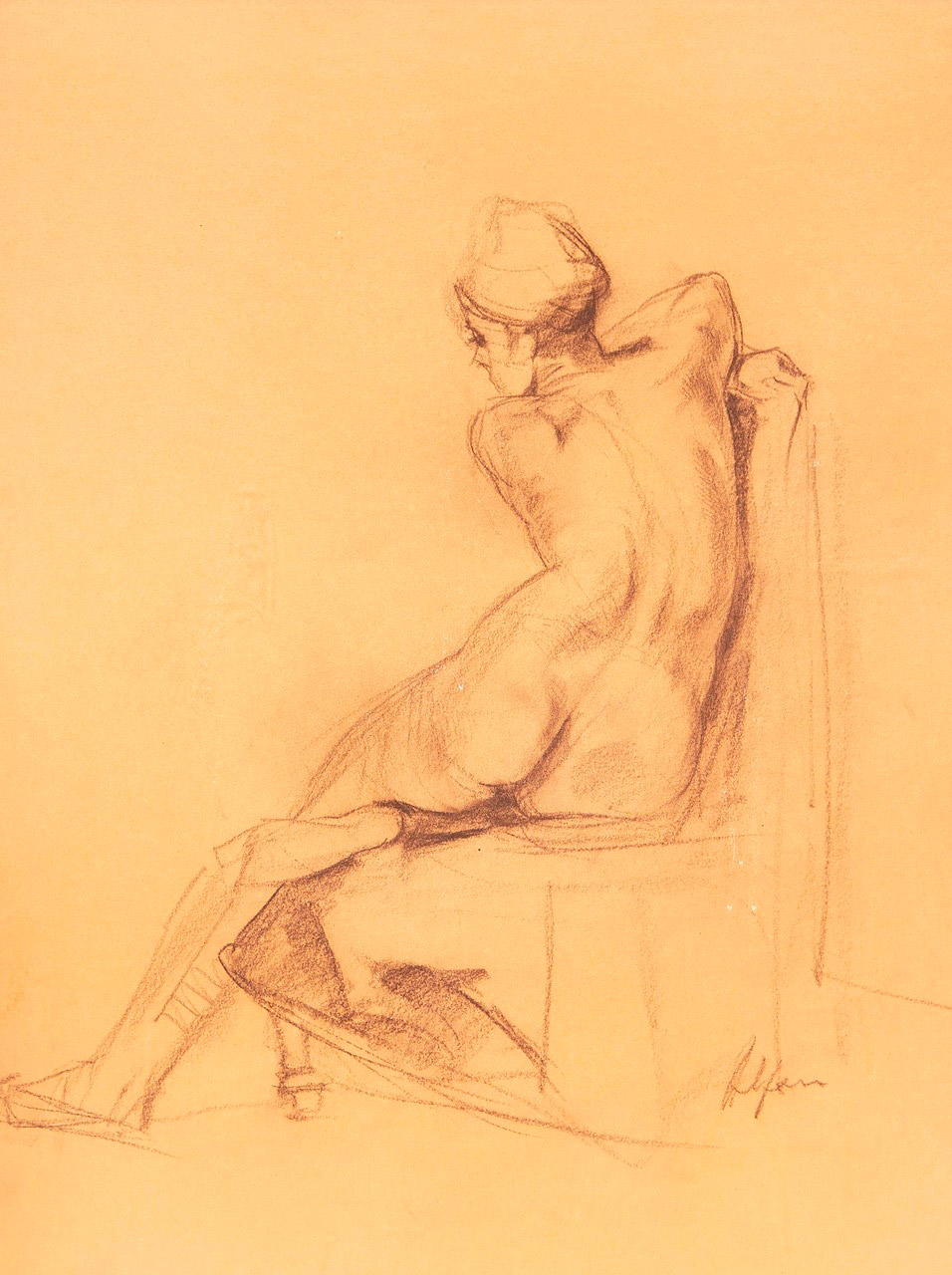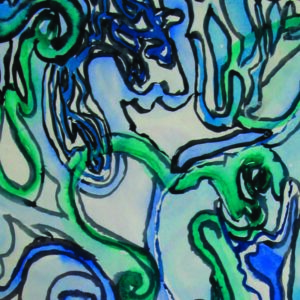Portrait of Florence Mackay 1937

Marion Mackay, Portrait of Florence Mackay, 1937
Watercolour and pencil on paper, 36.5 x 33.8 cm
Alberta Foundation for the Arts, Edmonton
Marion Nicoll created very few portraits, and most of them are early works depicting family and friends. This picture of the artist’s mother, Florence Mackay, shows Nicoll’s refined skills in creating a sympathetic likeness. She handles the light and shadow across the cheekbones, nose, and brow tenderly to convey a realistic and emotive impression of Florence deep in thought. A harmonious sepia palette of earthy reds and browns ensures that the subject, not colour, remains the focal point. Painted when Nicoll was twenty-eight years old, this watercolour demonstrates the technical proficiency she believed was core to an artist’s capacity for self-expression.

Nicoll’s skills developed primarily from study at the Ontario College of Art, Toronto (1927–1929). There, she studied with Arthur Lismer (1885–1969) and John Alfsen (1902–1971), who had both trained in the rigorous program of life and plaster cast drawing at the Académie Royale des Beaux-Arts, Antwerp, Belgium. “I accepted the academic training without question,” Nicoll remembered, noting her natural affinity for the style. “It was pie and there was nothing to it.”
In fall 1937, the year this portrait was painted, Nicoll took a leave of absence from her teaching position at the Provincial Institute of Technology and Art to further develop her skills in decorative arts and art history. She spent eight months at the Central School of Arts and Crafts, London, England, and, while she was there alone without friends or family, her mother died. Her father encouraged her to finish her studies before returning to Calgary in June 1938. It is not certain when exactly in 1937 this work was painted—before she left for England, or while still there. Possibly, then, it may be a memorial portrait but, regardless, it is the only known portrait she did of her mother.
Florence Mackay, protective of her only surviving child, would have been among the few influential women in Nicoll’s life. In her youth, Florence had done some teaching before settling on marriage and domesticity and her experience with public activities was limited. Nicoll married in 1940 but never had children and instead prioritized a career as an artist and educator. Though she chose a different path than her mother’s, it is telling that Nicoll chose to record Florence in this reflective way and suggests a loving and respectful bond between them.

 About the Author
About the Author
 More Online Art Books
More Online Art Books
 Acknowledgements
Acknowledgements